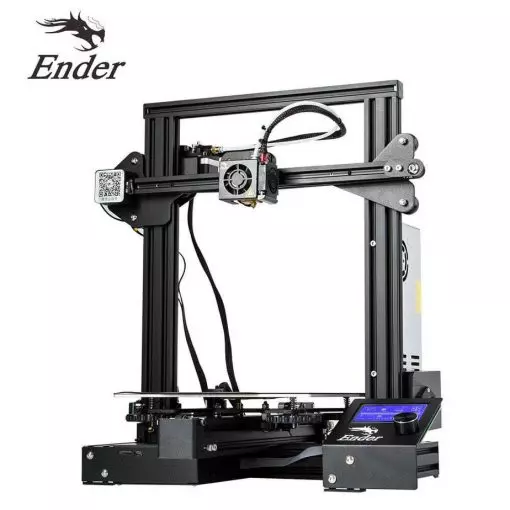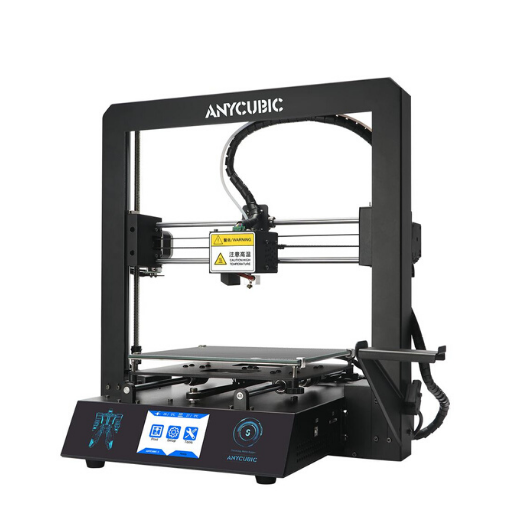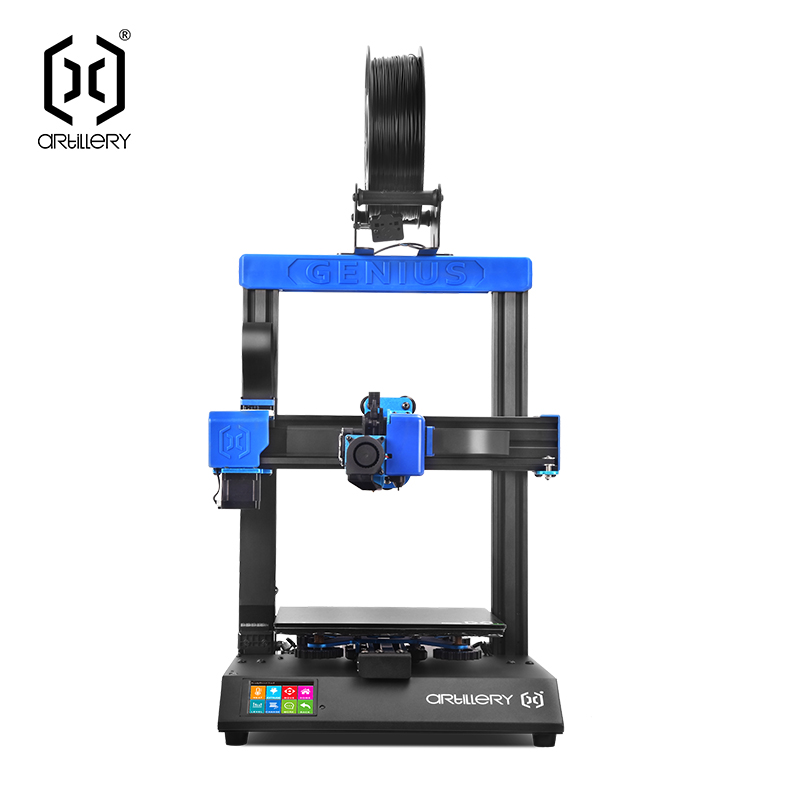Compare Ender 3 vs Mega S vs Genius Pro
Comparison between the best 3D printers
Choose the best 3D printer at the best price. The cheapest 3D printers are here.
Buy a 3D printer here with 3D Fila.
 |
 |
 |
|
| Model | Ender 3[BUY Ender 3] |
Mega S |
Genius Pro[BUY Genius Pro] |
| Printing Material | Filament | Filament | Filament |
| Estimated price | $210,00 | $149,00 | $309,00 |
| Fabricante | Creality 3D | Anycubic | Artillery |
| Release Year | 2018 | 2019 | 2022 |
| Print Volume [mm] | 220x220x250 | 210x210x205 | 220x220x250 |
| Printer Size [mm] | 440x440x465 | 405x410x452 | 430x390x590 |
| Weight [kg] | 6,62 | 14,5 | 9,6 |
| Power Loss Recovery | NO | YES | YES |
| Enclosed printer | NO | NO | NO |
| Bed Leveling | Manual | Manual | Automatic |
| Filament End Sensor | NO | YES | YES |
| Bed type | Heated | Heated | Heated |
| Power supply system | Bowden | Bowden | Direct Drive |
| Standard nozzle | 0,4 | 0,4 | 0,4 |
| Maximum Nozzle Temperature [°C] | 255 | 260 | 240 |
| Maximum Bed Temperature [°C] | 110 | 110 | 120 |
| Maximum printing speed [mm/s] | 180 | 100 | 150 |
| Filament holder | YES | YES | YES |
| Camera for supervision | NO | NO | NO |
| Recommended filaments | PLA, TPU, ABS, PETG | PLA, TPU, ABS, PETG | PLA, PETG, Tritan, Flex, ABS |
| Recommended slicers | Cura, Simplify, Slic3r | Cura, Simplify, Slic3r | Cura, Simplify, Slic3r, IdeaMaker |
| Maximum Resolution [mm] | 0,1 | 0,1 | 0,1 |
| Processor | 8 bits | 8 bits | Ruby 32bit |
| Display | Mono | Touchscreen TFT 2,8'' | Touchscreen TFT 3,5'' |
| Power Supply | 24V / 270W | 12V / 300W | |
| Connectivity | SD / USB | SD / USB | SD / USB |
| Operating systems | Windows, Mac, Linux | Windows, Mac, Linux | Windows, Mac, Linux |
| Date of registration in the system | 2021-04-13 | 2021-04-15 | 2022-11-07 |
| Release date | 2018 | 2019 | 2022 |
| Extra features | The Ender 3 V1 is a DIY assembly 3D printer, a sales leader since 2017, standing out for its cost-benefit. With a wide printing capacity, it has a CNC machined structure for precision and stability. It offers high-precision prints with low noise, thanks to its innovative V-profile and pulleys. It has a self-adhesive magnetic platform for easy removal of models and excellent adhesion. The Ender 3 heats up quickly, reaching 100°C in 5 minutes, ideal for agile prints. It includes protection against power failures, allowing you to resume printing after interruptions, saving time and material. | The Anycubic Mega S offers a printing platform with excellent adhesion, easy removal after cooling. It has a filament sensor for a better experience with flexible materials and a multilingual and intuitive color touchscreen. Assembly is quick, requiring only 8 screws and 3 connections. It has a large build volume (210 x 210 x 205 mm), high positioning accuracy and supports a variety of materials, including TPU, PLA, ABS and wood. It stands out for its solid metal structure, superior stability, high-quality printing with layer resolution of up to 50 microns, Ultrabase for easy adhesion and removal of parts, resumption of printing after power outage, high-quality extruder for flexible filaments, suspended filament support and stable structure that reduces shaking, improving printing quality. | The Artillery Genius Pro is a standout 3D printer with a fast-heating AC tempered glass print bed and a sleek design with a black aluminum base and blue accents. It features a Titan-style direct extruder and a 32-bit Ruby mainboard. Despite its advanced feature set, it struggles to maintain print quality, requiring frequent adjustments and calibrations, and its glued glass bed makes cleaning and replacement difficult. |
| Support for multiple colors and materials (AMS and CFS) | NO | NO | NO |
Notes * |
|||
| Cost-benefit | 6 / 10 | 6 / 10 | 7 / 10 |
| Hardware | 0.5 / 10 | 2 / 10 | 2.8 / 10 |
| Screen | . | . | . |
| Print volume | 3 / 10 | 3 / 10 | 3 / 10 |
| Performance | 1 / 10 | 0 / 10 | 1 / 10 |
| [BUY Ender 3] | [BUY Genius Pro] |
Conclusion |
| In comparing the Ender 3, Anycubic Mega S, and Artillery Genius Pro, we can see that each printer has its unique strengths and weaknesses, making them suitable for different user needs and preferences. The **Ender 3**, despite being an older model, is well-known for its affordability and reliable performance. It offers a good print volume and is praised for its precision and stability, thanks to its sturdy construction. However, it lacks advanced features like power recovery and automated bed leveling, which may be a drawback for some users. Overall, it provides a solid cost-benefit ratio but requires manual bed leveling and does not have a filament end sensor. The **Anycubic Mega S** presents itself as a budget-friendly choice with an intuitive interface and solid build quality. The quick assembly and excellent adhesion capabilities make it a great option for beginners. It includes features like a filament sensor and power loss recovery, enhancing the user experience. However, while its print quality is reliable, it has a slightly smaller build volume compared to the Ender 3 and Genius Pro. On the other hand, the **Artillery Genius Pro** is the newest model and offers advanced features such as a direct drive extruder and a larger touchscreen interface. However, it tends to require more frequent adjustments for print quality, which can be frustrating for users seeking a hassle-free experience. Its print bed is fast-heating and easier to manage in terms of adhesion and stability, but the glued glass bed complicates cleaning and replacements. In conclusion, if you prioritize budget and reliability, the **Ender 3** is an excellent choice, especially for those comfortable with manual adjustments. The **Anycubic Mega S** stands out for its user-friendly features and ease of assembly, making it ideal for entry-level users. Meanwhile, the **Artillery Genius Pro** is best suited for those who want advanced features and are prepared to invest the time in calibrating and adjusting the printer for optimal performance. Ultimately, the best choice depends on your specific needs, experience level, and budget. |

